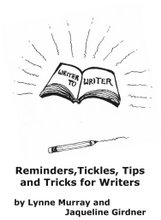Sunday, October 01, 2006
still escaping after all these years
[Apologies about the wierd formats. Too late for me to figure out!] L
September 16 to 30, 1976 was a good time for biographies, a mixed bag of nonfiction
and escape into thrillers and political cartoons, I read:
Jack Lemmon, Don Widener
Sylvia Plath, Method and Madness, Edward Butscher
My note: a psycho-critique -naïve in the extreme, lovingly calling Plath "neurotic" and "manic depressive" as if synonyoms for "nervous" and "moody."
Oscar Wilde, Louis Kronenberger
Pumping Iron, Charles Gaines & George Butler
This was a book, not the film, but by the same people
Post-mortem, D.M. Spain, M.D. w/Janet Kale
For Money or Love, Robin Lloyd
I had to look this up to see that it was about homosexual boy prostitution. Not the same boys as the Boys from Brazil below, that was about Nazis coming out of hiding.
The Boys from Brazil, Ira Levin
Gotta love the Stephen King quote in Wikipedia calling Ira Levin "the Swiss watchmaker of suspense novels."
Speaking of Inalienable Rights, Amy, G. B. Trudeau
September 16 to 30, 2006, I took a pretty simple escape route into an alternate world, I read:
A Fistful of Charms, Kim Harrison.
More about Rachel Morgan, the witch and "runner" (essentially a paranormal private investigator in an alternate world where half of humanity has been decimated by genetically engineered "killer tomatoes" and the witches, vampires, werewolves, pixies & etc., & etc. are able to come out of the closet without fear of lynching, and live in an uneasy state of truce.
I love this interesting world Harrison has created, but I see symptoms of a syndrome that affected both Laurell K. Hamilton and Patricia Cornwell's heroines. I don't know how to describe the way the effect is created. It may be worth studying, but the upshot (for me anyway as a reader) seems to be that
(1) Almost everybody (except the bad guys) loves our heroine, who is markedly deficient in common sense on many occasions, but that's just part of her charm.
(2) people who used to be close to our heroine have now turned into "bad guys" and it's not our heroine's fault, she's just too much of a softie to realize that they aren't worth her time and/or they're just jealous of her.
I have no idea where these fictional quirks come from, but they took me out of the story and made me impatient with the characters (which I think was the opposite of the intended effect).
September 16 to 30, 1976 was a good time for biographies, a mixed bag of nonfiction
and escape into thrillers and political cartoons, I read:
Jack Lemmon, Don Widener
Sylvia Plath, Method and Madness, Edward Butscher
My note: a psycho-critique -naïve in the extreme, lovingly calling Plath "neurotic" and "manic depressive" as if synonyoms for "nervous" and "moody."
Oscar Wilde, Louis Kronenberger
Pumping Iron, Charles Gaines & George Butler
This was a book, not the film, but by the same people
Post-mortem, D.M. Spain, M.D. w/Janet Kale
For Money or Love, Robin Lloyd
I had to look this up to see that it was about homosexual boy prostitution. Not the same boys as the Boys from Brazil below, that was about Nazis coming out of hiding.
The Boys from Brazil, Ira Levin
Gotta love the Stephen King quote in Wikipedia calling Ira Levin "the Swiss watchmaker of suspense novels."
Speaking of Inalienable Rights, Amy, G. B. Trudeau
September 16 to 30, 2006, I took a pretty simple escape route into an alternate world, I read:
A Fistful of Charms, Kim Harrison.
More about Rachel Morgan, the witch and "runner" (essentially a paranormal private investigator in an alternate world where half of humanity has been decimated by genetically engineered "killer tomatoes" and the witches, vampires, werewolves, pixies & etc., & etc. are able to come out of the closet without fear of lynching, and live in an uneasy state of truce.
I love this interesting world Harrison has created, but I see symptoms of a syndrome that affected both Laurell K. Hamilton and Patricia Cornwell's heroines. I don't know how to describe the way the effect is created. It may be worth studying, but the upshot (for me anyway as a reader) seems to be that
(1) Almost everybody (except the bad guys) loves our heroine, who is markedly deficient in common sense on many occasions, but that's just part of her charm.
(2) people who used to be close to our heroine have now turned into "bad guys" and it's not our heroine's fault, she's just too much of a softie to realize that they aren't worth her time and/or they're just jealous of her.
I have no idea where these fictional quirks come from, but they took me out of the story and made me impatient with the characters (which I think was the opposite of the intended effect).
Subscribe to:
Post Comments (Atom)




No comments:
Post a Comment